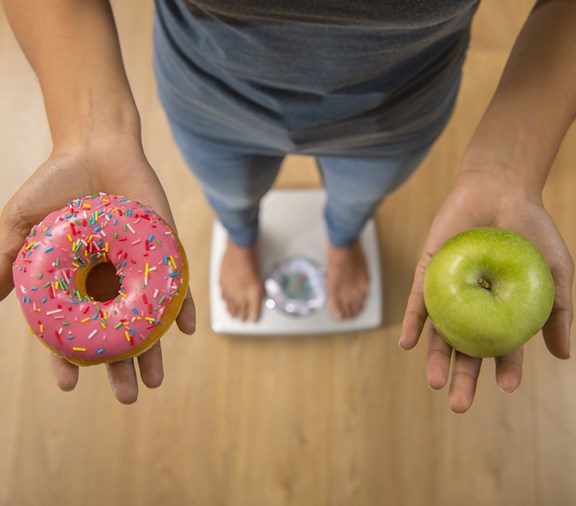
Five Tiny Diet Habits that Equal Big Health Benefits
June 8, 2021
Summer’s almost here. It’s the perfect time to make some small changes in your daily routine to build better health habits.
Small changes in diet and exercise are easy to start. They’re also easier to stick with than major, “all or nothing” goals.
Over time, step by step, small changes can add up to big gains for your health.
Here are a few to consider.
Try something new
Do you find yourself eating the same foods and drinks for breakfast, lunch, or dinner every day?
A “new food challenge” can help you to work better-for-you options into your day.
Instead of soda, brew a pitcher of iced herbal tea. Most of it has low or no caffeine, which can help you to sleep more soundly.
Love hamburgers? Try a veggie burger for a higher-fiber version of your favorite sandwich. You can even find veggie burgers at some fast food restaurants.
Switch up the way you prepare your foods. For example, instead of frying eggs, hard-boil them. You’ll get the protein without the oil.
Use less salt
If you eat lots of salt, also called sodium, you’re not alone.
High-sodium foods include cheese, tomato sauce, deli meats, canned soups and vegetables, pizza, pickles, soy sauce, and many breakfast cereals.
The American Heart Association recommends that adults should eat no more than 2,300 milligrams (mg) of sodium a day. The ideal limit is no more than 1,500 mg per day.
The good news is that you can make small changes to lower your salt intake without giving up the foods or flavors you love.
Here are a few to try:
- Put the salt shaker away. If it’s not on the table, you won’t add salt to your food.
- Buy low-sodium or salt-free soup.
- Select unsalted nuts or seeds for snacks.
- Enjoying some chips? Count one serving into a bowl instead of eating from the bag. You’ll eat less if you pay attention to serving size.
- Use lemon juice, garlic, cinnamon, and other spices instead of salt.
Keep a food diary
How much candy do you eat in a day? How many cups of coffee or cans of soda?
Each week, how many times do you eat a slice of watermelon, a banana, or a salad?
The numbers might surprise you.
Try keeping a daily food diary for two weeks. Use a free fitness app or simply keep notes with pen and paper. Record everything you eat and drink, including water.
Then review your app or notes. See any habits you want to break? Want to eat more healthful options or reduce some high-sugar or high-fat items?
Start with one change and work at it, day by day. It all adds up!
Eat more fiber
Fiber can help you to feel full longer. It may also help to lower blood sugar levels after you eat.
According to Harvard Health, American adults eat, on average, only 10 to 15 grams of total fiber per day.
However, the USDA recommends that women under age 50 should eat 25 grams a day. Men under 50 should eat 38 grams.
Women older than 50 should have 21 grams a day, and men in that age group should eat 30 grams.
Ready to add a little more fiber to your diet?
A good place to start is by checking the labels on your favorite cereals, breads and snacks. Eat less of the foods with low or no fiber and eat more high-fiber items.
Fiber-rich foods include raspberries, pears, apples, green peas, broccoli, potato with skin, whole wheat spaghetti, oatmeal, popcorn, lentils, black beans, and almonds.
And when you increase your fiber, be sure to drink lots of water. It will help your body to adjust to your new health habit.
Eat more non-starchy vegetables
Vegetables are good for you. And non-starchy vegetables can be especially good.
Non-starchy items have fewer carbohydrates. Unlike some other vegetables, they will not “spike” your blood sugar. They are also high in vitamins, minerals, and fiber.
If you want to add more vegetables to your diet, start by adding one non-starchy vegetable every week. Slowly make it a new habit.
Just a few examples include asparagus, brussels sprouts, celery, green beans, mushrooms, spinach, arugula, endive, zucchini, and tomatoes.
Bonus tip: Complete a health risk assessment (HRA)
One of PCHP’s main goals is to help you stay as healthy as possible.
We recommend that you complete a health risk assessment (HRA), which is a short survey covering topics like nutrition, fitness, sleep and mental health.
Log into the PCHP member portal to complete your HRA today!




